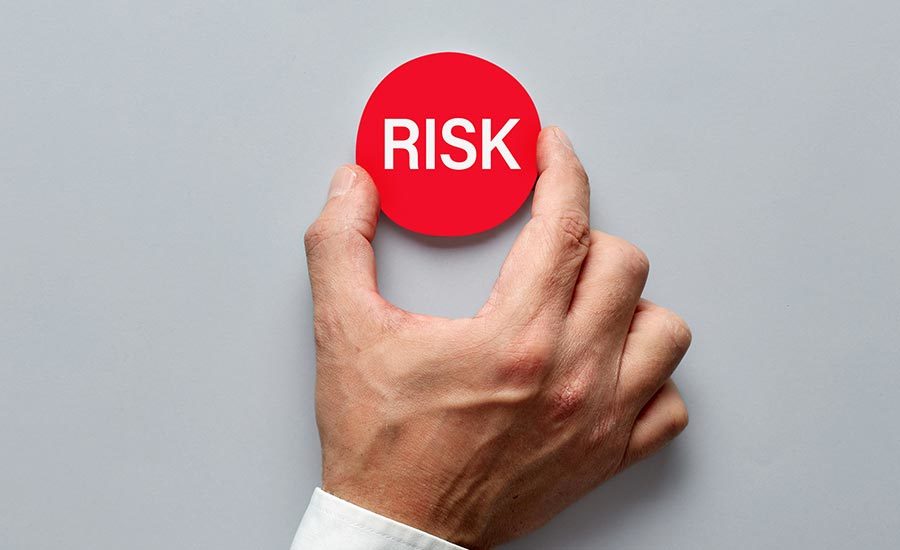Best Practices for Legionella Mitigation – Part One
Using Water Management Plans to Prevent Construction-Related Legionnaires’ Disease
Construction and renovations warrant heightened surveillance and preventative measures

Photo courtesy of zorroman/Creatas Video via Getty Images

Photo courtesy of cagkansayin/Getty Images plus via Getty Images
Construction and renovation events can pose several scenarios that can have significant impact on building water systems. These events can increase the potential for growth of Legionella, and ultimately increase the risk of Legionnaires’ disease to building occupants.
Examples of construction events that can negatively impact water quality by causing spikes in waterborne pathogens such Legionella include: Excavation, water main breaks, water pressure changes, brown water events, construction material changes, stagnation and ineffective commissioning.
The first documented outbreak of construction-related Legionnaires’ disease occurred in 1965 at a hospital in Washington, D.C. — before the notable outbreak at the 1976 American Legion convention in which Legionella got its name. Investigators retroactively tested frozen samples from patients and discovered the causative organism was Legionella pneumophila, serogroup 1. They suspected Legionella in the soil became aerosolized during excavation, which ultimately led to the outbreak, according to a 1978 article published in the Journal of Infectious Diseases.
We, at Special Pathogens Laboratory, have seen many similar outbreaks of Legionnaires’ disease in existing buildings as well as newly constructed buildings. In 2012, a $135 million, 12-story patient tower at an Ohio hospital had 11 cases of Legionnaires’ disease shortly after opening. Another example from 2014 occurred in a newly renovated hematology-oncology unit in an Alabama hospital. After opening, ten cases of Legionnaires’ disease were identified, resulting in two deaths.
These outbreaks have several common themes: Construction or renovation events occurring at the facility, were delayed occupancy and had high-risk occupants. High-risk occupants, such as immunocompromised and elderly, are already at an increased risk of acquiring Legionnaires’ disease. Quite frequently, there is a delay in occupying the building which allows Legionella to grow and spread prior to occupancy. As a lesson, this should demonstrate that heightened surveillance and warrant preventative measures when a facility undergoes construction and renovations and when the potable water supply is shut down and then re-pressurized.
Managing construction-related Legionnaires’ disease through better water management plans
Water safety and management plans are designed and implemented to minimize the risk of Legionella from our building water systems. However, just having a water safety and management plan does not guarantee control of Legionella, even if it meets the requirements of ASHRAE Standard 188. Many plans do not include a section to address construction and renovation events which is specifically addressed in Section 8 of ASHRAE Standard 188.
Section 8 of ASHRAE 188 provides guidance for designing building water systems and considerations for new construction and renovations. The four requirements identified by ASHRAE 188 are (ASHRAE 2018):
- Design compliance — specific items that address conditions to avoid Legionella growth and spread in the water system;
- Final installation documents — handover to the building owner of documentation that demonstrates the purpose of the design and how to maintain and monitor moving forward;
- Balancing — the water system should be balanced to confirm the water system operation and documentation provided to the building owner; and
- Commissioning — after completion, flush and disinfect the water system three weeks prior to beneficial occupancy.
Consider the following recommendations for water safety and management plans to help manage the risk of Legionnaires’ disease during construction and renovation events:
- Assign a team responsible for developing the water safety and management plan — the team shall have knowledge of the building water system design and water management as it relates to legionellosis, and should include members such as building owners, facility management, infection prevention and water treatment providers. A new standard, ASSE/IAPMO/ANSI 12080, “Professional Qualifications Standard for Legionella Water Safety and Management Personnel,” provides a certification program which sets the minimum criteria for the training and certification of persons involved in development, administration and execution of risk assessment and water safety management programs for Legionella in building water systems (ASSE 2020). This is a great tool to ensure your team has the required knowledge.
- Develop an audit program — the team should continually review and audit the plan to keep it up to date and ensure that any newly constructed or renovated areas are added to the existing plan. This helps to ensure that the plan is continually compliant with ASHRAE Standard 188.
- Specify a commissioning process to evaluate the risk of Legionella — since we know construction-related events, such as delayed occupancy, can lead to favorable conditions for Legionella growth. The commissioning process should evaluate that concern. Other commonly used microbial testing, such as Total Coliforms, E. coli and Heterotrophic Plate counts, or other water quality parameters should not be used as a surrogate for evaluating Legionella risk as these measurements do not correlate to Legionella growth. Specific testing for Legionella prior to occupancy is necessary to confirm that the risks of legionellosis have been managed.
- Provide guidance to the program team and facility staff — persistent discoloration or brown water during construction events is common. These events should be reported to maintenance personnel and infection control to determine if further investigation is warranted.
- Include proactive testing of the water system — the plan should include procedures for culturing the water systems before, during, and after excavation or shutdown and re-pressurization of the water supply, especially in areas that are occupied by immunocompromised or at-risk patients. Proactive testing allows the team to assess the risk of Legionnaires’ disease and take appropriate measures prior to occupancy.
- Address delayed occupancy — ASHRAE Standard 188 has specific requirements which address delated occupancy. Developing a flushing program and performing a risk assessment with environmental testing for Legionella helps the program team manage the risks of delayed occupancy.
- Plan for takeover of the newly construction or renovated water system — develop the ongoing monitoring, operating limits and corrective action procedures and establish these in the water safety and management plan. It is important to begin implementing the program when the water systems are started up, through the commissioning process, and then throughout the building’s operation.
Planning for construction and renovation
New construction in hospital facilities requires an Infection Control Risk Assessment (ICRA). This multidisciplinary approach is used to identify hazardous conditions during construction and renovation events, but typically focuses on ventilation and dust generation, with little focus on our water systems.
We have recommended utilizing the ICRA approach to focus on our building water systems. By developing a Water Infection Control Risk Assessment (WICRA) A the program team can plan for construction and renovation events to proactively prevent outbreaks associated with the water systems. The WICRA process follows the traditional ICRA process and includes:
- Identification the type of construction;
- Identify the occupant risk group(s) affected by the construction event;
- Select class of predetermined precaution/corrective actions based on the type of construction and occupant risk; and
- Submission of the WICRA permit to the water safety and management team for review and approval to proceed with implementation of the recommended precautions.
Conclusion
here are many lessons to be learned from previous construction related outbreaks of Legionnaires’ disease. Understanding the risks associated with construction allows us to proactively prevent disease. We can plan for these events through better water management plans, implementing the procedures in the water management plans, and proactively testing the water for Legionella to determine the risk at the facility.
|
David Pierre, is vice president of SPL Consulting Services at Special Pathogens Laboratory. He is an expert in New York City and state regulations for Legionella risk management and ANSI/ASHRAE Standard 188. An ASSE/IAPMO/ANSI 12080 Certified Legionella Water Safety Specialist, Pierre has overseen the development of more than 300 water safety and management plans and risk assessments for healthcare, hospitality, commercial and industrial facilities. His background includes an understanding of the physical conditions for Legionella and waterborne pathogens in premise plumbing and cooling towers. |








